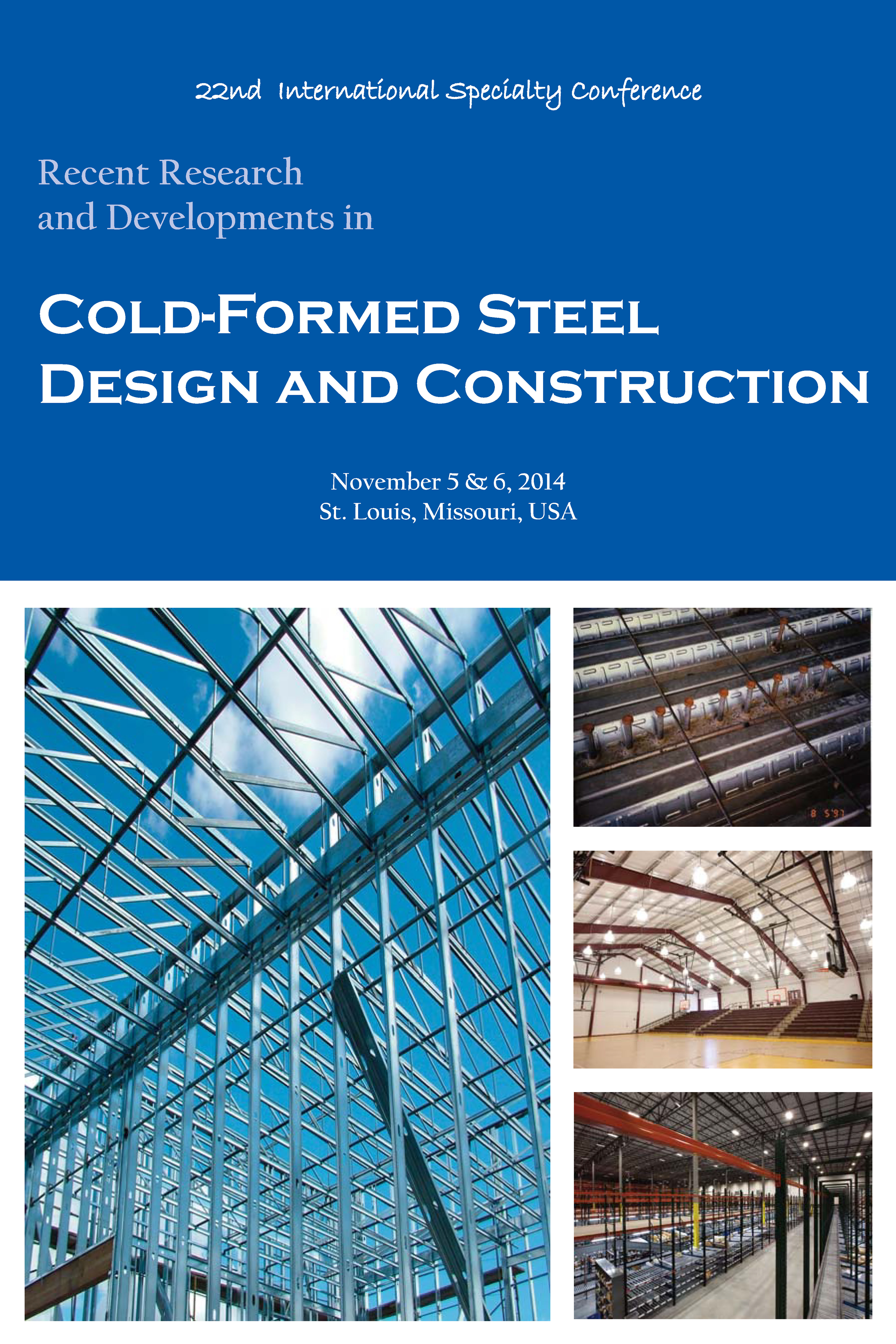Session Dates
05 Nov 2014
Abstract
This paper uses the Genetic Algorithm (GA)-based optimisation method for cold-formed steel (CFS) profiles with manufacturing constraints, developed in the companion paper, to shape-optimise simply-supported and singly-symmetric open-section columns. Having a uniform wall thickness of 0.047 inch (1.2 mm), the columns are subjected to a compressive axial load of 16,860 lbf (75kN) and optimised for yielding and global buckling. Column lengths ranging from 3.28 ft (1,000 mm) to 9.84 ft (3,000 mm) are investigated. The algorithm is run with and without considering the manufacturing constraints. Differences between the two types of cross-sections, i.e. manufacturable and non-manufacturable, are evaluated. The influence of the number of manufacturable flat segments on the optimised cross-sectional area is also investigated. Future developments of the method for strength optimisation under combined actions and practical applications are discussed.
Department(s)
Civil, Architectural and Environmental Engineering
Research Center/Lab(s)
Wei-Wen Yu Center for Cold-Formed Steel Structures
Meeting Name
22nd International Specialty Conference on Cold-Formed Steel Structures
Publisher
Missouri University of Science and Technology
Document Version
Final Version
Rights
© 2014 Missouri University of Science and Technology, All rights reserved.
Document Type
Article - Conference proceedings
File Type
text
Language
English
Recommended Citation
Wang, Bin; Gilbert, Benoit P.; Molinier, Adrien M.; Guan, Hong; and Teh, Lip H., "Shape Optimisation of Cold-Formed Steel Profiles with Manufacturing Constraints - Part II: Applications" (2014). CCFSS Proceedings of International Specialty Conference on Cold-Formed Steel Structures (1971 - 2018). 3.
https://scholarsmine.mst.edu/isccss/22iccfss/session01/3
Shape Optimisation of Cold-Formed Steel Profiles with Manufacturing Constraints - Part II: Applications
This paper uses the Genetic Algorithm (GA)-based optimisation method for cold-formed steel (CFS) profiles with manufacturing constraints, developed in the companion paper, to shape-optimise simply-supported and singly-symmetric open-section columns. Having a uniform wall thickness of 0.047 inch (1.2 mm), the columns are subjected to a compressive axial load of 16,860 lbf (75kN) and optimised for yielding and global buckling. Column lengths ranging from 3.28 ft (1,000 mm) to 9.84 ft (3,000 mm) are investigated. The algorithm is run with and without considering the manufacturing constraints. Differences between the two types of cross-sections, i.e. manufacturable and non-manufacturable, are evaluated. The influence of the number of manufacturable flat segments on the optimised cross-sectional area is also investigated. Future developments of the method for strength optimisation under combined actions and practical applications are discussed.



